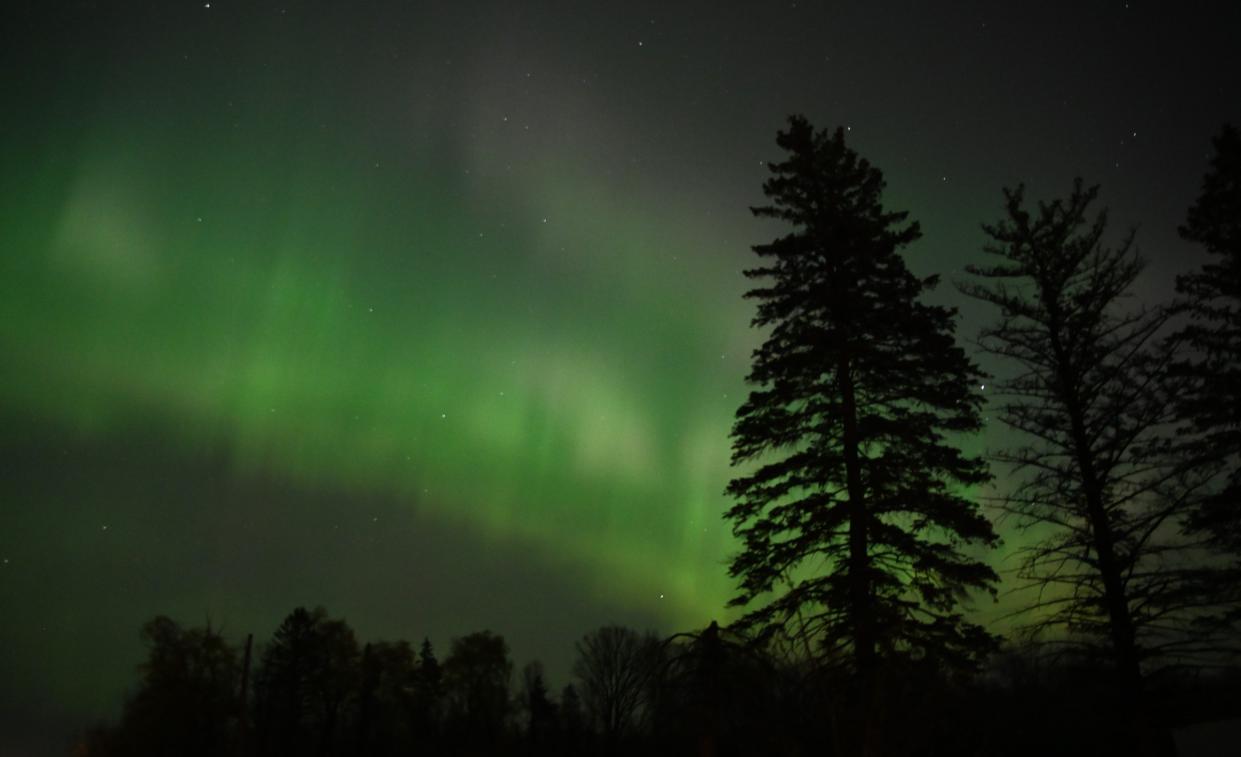Northern lights forecast to be on full display over Alaska this week. Here's how to watch.

Alaska residents and visitors to the Last Frontier this week could have the chance to view the kaleidoscopic glow of the northern lights.
The natural phenomenon, also known as the aurora borealis, could be visible in six U.S. states this Thursday, July 13. The University of Alaska Fairbanks Geophysical Institute forecasts that auroral activity will be high with hyperactive light displays more visible overhead in regions where favorable weather conditions persist.
Unlike the other states, witnessing the aurora borealis is a common occurrence in Alaska. The northern lights are visible from August to April when the sky is clear and dark enough, according to Travel Alaska.
Here's what you need to know to catch the aurora borealis this time around.
Where could the northern lights appear in Alaska?
The northern lights will be active and visible overhead from Utqiaġvik to Anchorage and Juneau, according to the forecast set by UAF's Geophysical Institute. There is also potential for lights to be visible low on the horizon from King Salmon and Prince Rupert.
What time will the northern lights be visible?
The best chance of viewing the aurora borealis is between 10 p.m. and 2 a.m. local time, the National Oceanic and Atmospheric Administration's Space Weather Prediction Center says.
10 p.m. to midnight is your best chance of catching the northern lights in Alaska. The higher the geomagnetic activity, the brighter the aurora.
People interested in seeing them should get away from city lights.
As the day approaches, NOAA will monitor the activity and release a forecast of its own.
Want to catch the northern lights? 17 US states could see them this week.
Where else can the northern lights be seen?
Here are the other states that may see the northern lights this week:
Montana
South Dakota
Wisconsin
Michigan
Oregon
When was the last major northern light event in the U.S.?
A geomagnetic storm created lights that were visible in 30 U.S. states in late April. The aurora could be seen in parts of Iowa, North Dakota and Kansas.
What are the northern lights?
The aurora borealis is a glow produced by electrons that float down to the Earth’s magnetic field from space. The electrons crash with atoms and molecules of the atmosphere in a ring on the Earth’s magnetic pole, according to NOAA's Space Weather Prediction Center.
All of that commotion produces multicolor bulbs of light, which can be seen in the northern and southern hemispheres respectively.
Graphics: How the northern lights spread their wonder.
What causes the northern lights?
Wind from the sun and Earth’s magnetic field interact together to form the aurora. The aurora is a byproduct of geomagnetic storms. As the solar wind increases in speed and magnetic field come together to move south, the aurora becomes brighter and more active, according to NOAA.
This article originally appeared on USA TODAY: Northern lights forecast over Alaska this Thursday: latest updates

